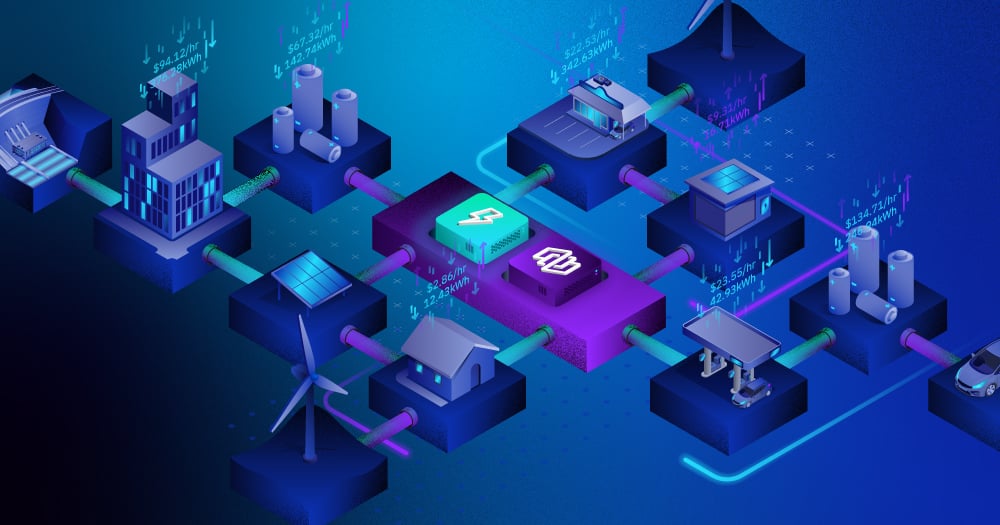Chris Stevens | 12 February 2024


In the 1700s, the first industrial revolution utilised steam and water to mechanise production. In the 1800s, the second industrial revolution harnessed electric power for mass production. In the 1960s, electronics and information technology were used to automate production. And now, here we are in the fourth industrial revolution exploring how digital technologies can fundamentally alter the way we live, move, produce, communicate, and more.
Energy is one of the last major industries to undergo a digital transformation. While there are a number of reasons why this is, it can largely be attributed to the value of digital not being fully realised within energy businesses because the unique challenges of energy have not always been accounted for in digital technologies. And herein lies the issue - the world has changed around the energy sector, which has somewhat shielded it from the pain that other sectors have felt. This pain is the catalyst for change, and its absence causes the extraordinary inertia that currently exists within the energy industry. Whereas other industries are harnessing the power of modern technology to disrupt and reshape the way we do things, energy is still operating on outdated legacy technology built for a world that existed before things started rapidly changing.
Twenty-odd years ago, the energy industry was far simpler than it is today. It was linear - electricity flowed one way - from the retailer to the consumer. And the money flowed back - from the consumer to the retailer. And all operational legacy systems, like billing, were built to support this model. Absolutely fit for purpose back then when there was only one option for receiving and consuming energy, and when the power of choice and change sat firmly inside the retailer’s business.
Today, things look very different and are continuing to evolve at a pace we’ve never seen before. Consumers have solar panels and batteries on their properties, companies own hardware and have become producers of energy and the linear model is no longer. The power of choice is now in the consumer’s hands and the experiences of other sectors has driven a mindset that places new demands upon the generation, storage, movement, and consumption of energy.
We are only at the very beginning of the energy transition. There is no crystal ball - while there are goals that must be reached to achieve Net Zero, the pathway there still has unknowns and energy sellers are still exploring what they can operationalise, what will be profitable, and how they are going to get there. But one thing is for certain, the legacy technology that was built for the simple, linear energy model is not equipped to handle the complexities of the new energy landscape.
Here at Flux we often discuss how our billing software can expose and calculate the cost of energy. For an outsider to the industry, this must seem like a fundamental principle of being an energy retailer. Surely to be profitable the retailer must be able to see the energy used and calculate what to bill whom? You’d think so.
Here’s the issue - legacy billing software bills what the meter reads. This is adequate for a traditional, linear supply of energy arrangement such as a household receiving, consuming, and paying for electricity. But what happens when you have a salesperson on the road with an electric vehicle and instead of a fuel card, the employer wants to pay for the portion of the salesperson’s household energy consumed in charging the EV? Or if you have an embedded network inside an apartment block where the block pays one total amount of energy, but each resident uses varying amounts of energy and therefore should be charged accordingly? If the meters for the salesperson’s house and the apartment block each provide one figure of energy consumption, how does the energy retailer isolate the units of energy used by the EV or each resident to bill accordingly? Short answer, if it’s running legacy billing software, it can’t.
The meter mindset is so deeply baked into legacy billing software that exposing and calculating the cost of energy behind the meter is impossible.
The energy sector is well aware of the need for change. And from the conversations we have, it also knows that legacy billing software is an enormous impediment. One of the challenges energy executives face is not knowing exactly what the future of energy is, and therefore the importance of making technology choices today that can support such a vast array of unknowns.
Modern billing systems that provide options, can be changed quickly, support a fast test and learn environment, and enable new energy products to be launched inside a matter of weeks is paramount. From where I sit and with the rumblings of disruption already upon the industry, the time to invest in modern billing software is now.
So what is ‘modern’ billing software? Well, there’s two ways to look at this:
If I circle back to my earlier comment about inertia and the lack of change across the energy sector, this rings true in what we hear of retailers focused on operations for today’s energy market and products. Of course, this makes sense because profit is driven by our current actions. However, if you are a seller of energy and are looking to choose a billing platform to suit your needs now, you must also consider what your needs might be in ten years’ time, and purchase the tech that will allow you to be ready for any possibility.
With a future that is unknown and technology playing a significant role in the enablement or impediment of that future, choose a modern billing platform that is built to adapt, flex, scale, integrate, and can easily be configured to whatever you may decide. Legacy systems may tick the boxes today, but are they the key to unlocking tomorrow?
If you’re ready to mobilise your vision of the future of energy and want to see the benefits of modern billing technology, speak to one of our energy experts today about how Flux’s next generation billing technology can support your digital transformation.

Sign up for the latest updates in technology, changes, regulations, and new energy products from Flux.